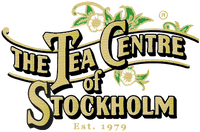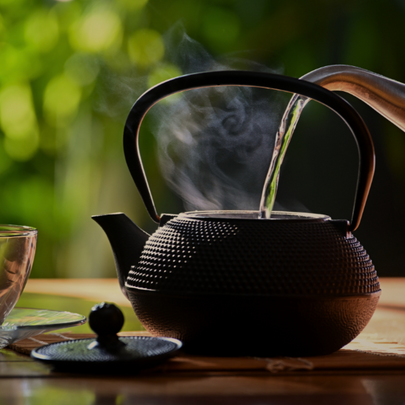PU ERH

A Journey into the Craft of Post-Fermentation
Hei-Cha means “dark tea” in Chinese and is the name of the category of post-fermented teas. Unlike green, black or oolong, which are finished once they are processed, Hei-Cha continues to develop over time. Through slow microbial fermentation and oxidation, both the taste, aroma and character deepen year after year. The most famous representative of this category is Pu Erh from Yunnan Province.
Pu Erh – A Tea with History
Pu Erh is made from large-leafed Camellia sinensis assamica, often picked from ancient tea trees in the misty mountains of Yunnan. Its history stretches back over a thousand years. During the imperial era, Pu Erh was valued as a tribute tea, and along the old Tea and Horse Road it was traded for salt and horses between China, Tibet and further west. To this day, Pu Erh is one of China's most culturally significant teas.
Raw and Ripe Pu Erh
The journey begins with mao cha — sun-dried leaves that form the basis of Pu Erh. From here there are two paths.
Raw Pu Erh (Sheng) is pressed into cakes and aged to mature naturally. When young, it can be fresh, floral or slightly harsh, but over time the flavour becomes rounder with honey-like, woody and earthy notes. Mature Pu Erh (Shou), developed in the 1970s, undergoes a controlled “wet-piling” process that speeds up fermentation. The result is a tea that is dark, smooth and earthy from the start, with associations of forest, cocoa or sweet wood.



Taste, Ritual and Well-being
Pu Erh is prized not only for its taste, but also for the way it makes people feel. In Yunnan and much of China, it has long been drunk after meals, often associated with a sense of calm and balance. Science continues to investigate its properties, but what is certain is that Pu Erh offers a tranquil ritual — a warm and rich cup that invites calm and reflection.
Brewing Pu Erh
Brewing Pu Erh is easier than many people think. Use water just below boiling point (around 95–100°C) and a generous amount of leaves. A small teapot or gaiwan allows you to brew the same leaves multiple times, with each infusion revealing new layers of flavor. Ung Sheng is best brewed briefly for a lively cup, while Shou Pu Erh can be steeped a little longer to bring out its soft, earthy body.
A Tea as the Shape of Time
Hei-Cha, and especially Pu Erh, is more than a beverage. It is a living expression of time, place and craft. Each cake carries its origins, and over the years it changes, always with something new to discover. To drink Pu Erh is to experience tea not as a fixed taste, but as a journey — one that slowly unfolds, cup by cup.






